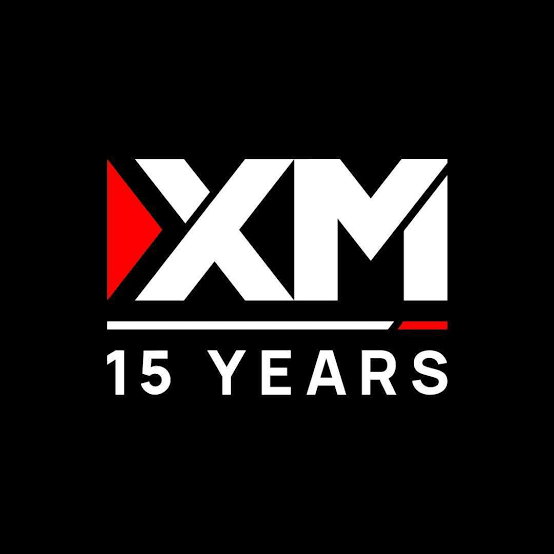CFD Day Trading – Complete Educational Guide
This comprehensive educational guide explores CFD day trading from multiple perspectives: trading strategies, risk management, broker selection, cost analysis, and practical implementation. Contracts for Difference (CFDs) allow long/short exposure with leverage but include unique considerations like financing costs and gap risk. Always begin with demo accounts to understand platform functionality and risk controls before considering live trading.
Educational Note: This guide is for educational purposes only. CFD trading carries significant financial risk, and leverage can result in losses that exceed your initial deposit. Between 65-80% of retail investors lose money when trading CFDs. Never trade with money you cannot afford to lose completely.
Recommended Brokers 2025
Educational access and demo-first practice. No investment advice.
Table of Contents
Understanding CFD Day Trading
CFD Day Trading Strategies
Risk Management & Psychology
Broker Selection & Tools
CFD Trading Basics
Contracts for Difference (CFDs) are derivative products that allow traders to speculate on price movements without owning the underlying asset. When trading CFDs, you're entering into a contract with your broker to exchange the difference in value of an asset from when the position is opened to when it is closed.
How CFD Trading Works
Example: CFD Trade on Apple Stock
Apple stock price: $150 per share
You believe the price will rise, so you buy 100 CFDs at $150
With 5% margin requirement: 100 shares × $150 × 5% = $750 initial outlay
If Apple rises to $160: Profit = ($160 - $150) × 100 = $1,000
If Apple falls to $140: Loss = ($140 - $150) × 100 = -$1,000
This demonstrates how leverage amplifies both potential profits and losses.
Key Characteristics of CFDs
| Feature | Description | Impact on Day Trading |
|---|---|---|
| Leverage | Trade larger positions with smaller capital | Amplifies profits and losses; requires careful risk management |
| Long/Short Positions | Profit from both rising and falling markets | Flexibility to trade in any market condition |
| No Ownership | You don't own the underlying asset | No dividend rights or voting privileges |
| Overnight Financing | Cost to hold positions overnight | Day traders avoid this by closing all positions daily |
| Wide Range of Markets | Access to forex, indices, commodities, stocks | Diversification opportunities across asset classes |
CFD Trading Costs
| Cost Type | Description | Typical Range | Impact on Day Trading |
|---|---|---|---|
| Spread | Difference between buy and sell price | 0.1 pips to several pips depending on asset | Primary cost for day traders; directly impacts profitability |
| Commission | Some brokers charge separate commission | $0-$10 per lot or 0.01%-0.1% of trade value | Adds to transaction costs; important for high-frequency strategies |
| Overnight Financing | Cost to hold positions overnight | Typically LIBOR/SOFR +/- broker's margin | Irrelevant for pure day traders who close all positions daily |
| Currency Conversion | Cost to convert profits/losses to account currency | 0.5%-2% of converted amount | Can be minimized by trading in your account currency |
Cost Management Tip: For day traders, the spread is typically the most significant cost. Commission-based accounts with tighter spreads may be more economical for high-frequency strategies, while spread-only accounts often work better for lower-frequency approaches.
Advantages of Day Trading CFDs
Day trading CFDs offers several unique advantages compared to other trading approaches, particularly for traders who can dedicate focused time to market monitoring and have the discipline to follow strict risk management protocols.
Key Advantages for Day Traders
No Overnight Risk
By closing all positions before the end of the trading day, day traders avoid overnight gap risk and financing charges.
Leverage Efficiency
CFD leverage allows day traders to control larger positions with less capital, potentially amplifying intraday profit opportunities.
Market Flexibility
Ability to go long or short provides trading opportunities in both rising and falling markets throughout the day.
Diverse Instrument Access
Access to multiple asset classes (forex, indices, commodities) allows diversification within a single trading account.
Technical Focus
Day trading primarily relies on technical analysis, which many traders find more predictable than fundamental analysis for short-term moves.
Defined Risk Parameters
The short-term nature of day trading allows for precise risk definition with stop-loss orders on every trade.
CFD Day Trading vs Other Approaches
| Trading Style | Holding Period | Primary Analysis | Risk Profile | Suitable For |
|---|---|---|---|---|
| Scalping | Seconds to minutes | Technical (tick charts) | Very High | Experienced, focused traders |
| Day Trading | Minutes to hours | Technical (intraday) | High | Active traders with time |
| Swing Trading | Days to weeks | Technical + Fundamental | Medium | Traders with other commitments |
| Position Trading | Weeks to months | Fundamental + Technical | Medium-Low | Long-term investors |
CFD Trading Risks
While CFD day trading offers significant profit potential, it also carries substantial risks that must be thoroughly understood and managed. Successful day traders prioritize risk management above all other considerations.
Primary CFD Trading Risks
| Risk Type | Description | Mitigation Strategies |
|---|---|---|
| Leverage Risk | Small price movements can lead to large losses exceeding initial deposit | Use conservative leverage, proper position sizing, strict stop losses |
| Market Risk | Prices can move rapidly and unpredictably | Diversify, trade during liquid hours, avoid news events |
| Liquidity Risk | Difficulty entering/exiting positions at desired prices | Trade major instruments, avoid thin markets |
| Counterparty Risk | Risk of broker default | Choose well-regulated brokers with segregated client funds |
| Gap Risk | Prices can jump between sessions | Close positions before market closes, use guaranteed stops |
| Execution Risk | Slippage and requotes during volatile conditions | Use limit orders, avoid trading during major news |
Understanding Leverage Impact
Example: Leverage Impact on Account Equity
Account Balance: $10,000
Position: 2 standard lots EUR/USD (€200,000) with 1:50 leverage
Required Margin: €200,000 ÷ 50 = €4,000 ($4,400 approx.)
If EUR/USD moves 1% against your position:
Loss = €200,000 × 1% = €2,000 ($2,200 approx.)
This represents a 22% loss on your account from just a 1% market move
With 1:200 leverage, the same move would represent an 88% account loss
Risk Warning: CFD trading carries a high level of risk and may not be suitable for all investors. The high degree of leverage can work against you as well as for you. Before deciding to trade CFDs, you should carefully consider your investment objectives, level of experience, and risk appetite. Most importantly, never invest money you cannot afford to lose.
Trading Sessions & Volatility
Understanding global trading sessions and their volatility characteristics is crucial for CFD day traders. Different sessions offer varying trading opportunities based on liquidity, volatility patterns, and market participants.
Major Trading Sessions
Global Trading Session Overview (GMT Times)
Asian Session: 23:00 - 08:00 (Tokyo, Hong Kong, Singapore)
European Session: 07:00 - 16:00 (London, Frankfurt, Paris)
US Session: 12:00 - 21:00 (New York, Chicago)
Overlap Sessions (Highest Volatility):
London/New York: 12:00 - 16:00 | Tokyo/London: 07:00 - 08:00
Session Characteristics & Trading Strategies
| Session | Volatility | Liquidity | Best Instruments | Recommended Strategies |
|---|---|---|---|---|
| Asian | Low to Medium | Medium | USD/JPY, AUD/USD, Nikkei | Range trading, breakout anticipation |
| European | Medium to High | High | EUR pairs, GBP pairs, DAX, FTSE | Breakout trading, momentum strategies |
| US | High | Very High | USD pairs, S&P 500, NASDAQ | Momentum, news trading, reversal plays |
| Overlap (London/NY) | Very High | Extreme | All major pairs, indices | Breakout, momentum, scalping |
Economic Calendar Impact
Economic news releases create significant volatility and trading opportunities. Understanding how to trade around these events is essential for CFD day traders.
| Event Type | Examples | Typical Impact | Trading Approach |
|---|---|---|---|
| High Impact | NFP, CPI, Interest Rates | Extreme volatility, wide spreads | Avoid trading or use specific news strategies |
| Medium Impact | Retail Sales, PMI | Significant moves, manageable spreads | Momentum or fade strategies |
| Low Impact | Minor economic indicators | Minimal price action | Normal trading strategies |
Session Trading Tip: Many successful day traders focus primarily on the London/New York overlap session (12:00-16:00 GMT) when volatility and liquidity are highest. This concentrated approach allows for more focused trading during the most active market hours.
Scalping Strategies
Scalping is a high-frequency trading strategy that aims to capture small price movements multiple times throughout the day. This approach requires intense focus, quick decision-making, and a broker with tight spreads and fast execution.
Scalping Strategy Components
| Component | Description | Implementation |
|---|---|---|
| Timeframe | Very short-term price movements | 1-minute, 5-minute charts, tick charts |
| Hold Time | Seconds to few minutes | Quick entries and exits |
| Profit Target | Small gains per trade | 3-10 pips depending on instrument |
| Risk Management | Tight stop losses | 5-15 pip stops, 1:1 or better risk-reward |
| Instrument Selection | High liquidity, low spreads | Major forex pairs, major indices |
Popular Scalping Techniques
Price Action Scalping
Trading based on pure price movement without indicators. Focuses on support/resistance, candlestick patterns, and order flow.
Indicator-Based Scalping
Using fast-moving indicators like stochastic, RSI, or moving average crossovers to generate entry signals.
Arbitrage Scalping
Exploiting small price differences between related instruments or different brokers (requires sophisticated technology).
Market Making
Providing liquidity by simultaneously placing buy and sell orders to capture the spread (typically institutional).
Scalping Example
EUR/USD Scalping Trade Example
Instrument: EUR/USD (spread: 0.8 pips)
Strategy: 1-minute chart breakout with 5 pip target, 5 pip stop
Entry: Buy at 1.1050 after consolidation breakout
Stop Loss: 1.1045 (5 pips)
Take Profit: 1.1055 (5 pips)
Position Size: 2 mini lots (20,000 units)
Risk: 20,000 × 0.0005 = $10
Potential Profit: 20,000 × 0.0005 = $10 (before spread)
Net Profit if Successful: $10 - (20,000 × 0.00008 spread) = $8.40
This demonstrates how spreads significantly impact scalping profitability
Scalping Considerations: Scalping requires a broker with tight spreads, fast execution, and no restrictions on trading style. Many brokers discourage or prohibit scalping, so ensure your broker accommodates this strategy. The high frequency of trades means transaction costs (spreads) have a major impact on overall profitability.
Position Sizing for CFD Day Trading
Proper position sizing is arguably the most important aspect of successful CFD day trading. It determines how much capital you risk on each trade and directly impacts your ability to withstand losing streaks while maximizing profitable opportunities.
Position Sizing Methods
| Method | Calculation | Advantages | Disadvantages |
|---|---|---|---|
| Fixed Fractional | Risk fixed % of account per trade | Simple, protects during drawdowns | May underutilize capital during winning streaks |
| Fixed Ratio | Increase size after reaching profit milestones | Aggressive growth during winning periods | Can lead to large drawdowns |
| Kelly Criterion | Mathematical optimization based on edge | Theoretically optimal growth | Requires accurate win rate and risk-reward data |
| Volatility-Based | Adjust position size based on instrument volatility | Equalizes risk across different instruments | More complex calculations required |
Fixed Fractional Position Sizing Example
Example: 1% Risk Per Trade Position Sizing
Account Balance: $10,000
Risk Per Trade: 1% = $100
Trade: Buy EUR/USD at 1.1050 with stop at 1.1040 (10 pip stop)
Pip Value for Standard Lot: $10
Position Size Calculation: $100 risk ÷ (10 pips × $10 per pip) = 1 standard lot
With a mini account ($1 per pip): $100 risk ÷ (10 pips × $1 per pip) = 10 mini lots
With a micro account ($0.10 per pip): $100 risk ÷ (10 pips × $0.10 per pip) = 100 micro lots
This approach ensures consistent risk regardless of instrument or stop distance
Position Sizing Considerations for Different Strategies
| Trading Style | Recommended Risk Per Trade | Typical Position Size Relative to Account | Considerations |
|---|---|---|---|
| Scalping | 0.5% - 1% | Smaller positions, higher frequency | Transaction costs significantly impact results |
| Momentum Day Trading | 1% - 2% | Medium positions, medium frequency | Balance between opportunity capture and risk control |
| Swing Trading | 1% - 3% | Larger positions, lower frequency | Wider stops require smaller position sizes |
Position Sizing Tip: Most professional traders risk no more than 1-2% of their account on any single trade. This conservative approach allows them to withstand normal losing streaks without significant account damage. Remember that with multiple positions open simultaneously, your total account risk increases accordingly.
CFD Broker Comparison for Day Trading
Selecting the right CFD broker is critical for day trading success. Key considerations include regulation, trading costs, execution quality, platform features, and instrument availability. The table below compares popular brokers for CFD day trading.
CFD Day Trading Broker Comparison
| Broker | Minimum Deposit | EUR/USD Spread | Commission | Leverage | Platforms | Best For |
|---|---|---|---|---|---|---|
| Deriv | $5 | 1.6 pips | $0 | Up to 1:1000 | MT5, DTrader, DBot | Beginners, synthetic trading |
| HFM | $0 | 1.5 pips | $0-$6 | Up to 1:1000 | MT4, MT5, HF App | All traders, copy trading |
| Exness | $1 | 1.1 pips | $0 | Up to 1:Unlimited | MT4, MT5, Exness Terminal | Low-cost trading, scalping |
| XM | $5 | 1.6 pips | $0 | Up to 1:1000 | MT4, MT5 | Education, all account sizes |
| AvaTrade | $100 | 1.8 pips | $0 | Up to 1:400 | MT4, MT5, AvaTradeGO | Regulation-focused traders |
Broker Selection Criteria for Day Traders
Regulation & Safety
Prioritize brokers with strong regulatory oversight and segregated client funds for capital protection.
Trading Costs
Low spreads and commissions significantly impact day trading profitability, especially for high-frequency strategies.
Execution Quality
Fast execution with minimal slippage and requotes is essential for precise entry and exit timing.
Platform & Tools
Advanced charting, technical indicators, and automated trading capabilities support effective day trading.
Instrument Range
Access to multiple markets (forex, indices, commodities) allows diversification and more trading opportunities.
Customer Support
Responsive support is crucial for resolving technical issues quickly during trading hours.
Broker Testing Recommendation: Open demo accounts with 2-3 brokers that meet your criteria. Test them during your typical trading hours with your intended strategies. Pay attention to execution speed, platform stability, and how spreads behave during volatile conditions. Only fund an account after thorough testing.
Frequently Asked Questions
Are CFDs expensive for intraday trading?
CFD costs depend primarily on spreads and your trading frequency. For day traders who close all positions before the end of the day, overnight financing costs are avoided. The main expenses are spreads (and commissions if applicable). High-frequency strategies require brokers with very tight spreads to be profitable.
How can I mitigate gap risk in CFD trading?
Day traders can completely avoid gap risk by closing all positions before market closes. For instruments that trade 24/5 like forex, there's still weekend gap risk. Use stop-loss orders (consider guaranteed stops for important news events), avoid holding positions through major economic announcements, and trade smaller position sizes to manage potential gap impacts.
What's the minimum capital needed for CFD day trading?
There's no fixed minimum, but practical considerations include broker minimum deposits (typically $0-$500), margin requirements, and sensible position sizing. Many brokers offer micro and cent accounts that allow trading with very small amounts. However, proper risk management typically requires at least $1,000-$2,000 to implement sensible position sizing across multiple trades.
Can I make a living from CFD day trading?
While possible, making a consistent living from CFD day trading is extremely challenging and achieved by only a small percentage of traders. It requires significant capital, advanced skills, emotional discipline, and a proven profitable strategy. Most successful professional traders have years of experience and sophisticated risk management systems. Beginners should view trading as a skill to develop over time rather than a quick path to income.
What are the tax implications of CFD trading?
Tax treatment of CFD trading varies significantly by country. In some jurisdictions, CFDs are subject to capital gains tax, while in others they may be considered speculative income or business income. Some countries offer tax advantages for spread betting as an alternative to CFDs. Always consult with a qualified tax professional in your jurisdiction to understand your specific tax obligations.
Explore more education: Home • Brokers (Overview) • Trading Strategies




